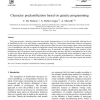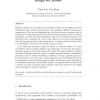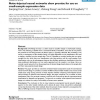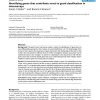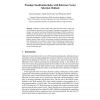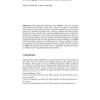PRL
2002
14 years 11 days ago
2002
This paper presents a learning system that uses genetic programming as a tool for automatically inferring the set of classification rules to be used during a preclassification sta...
ISCI
2008
14 years 22 days ago
2008
Rough set theory can be applied to rule induction. There are two different types of classification rules, positive and boundary rules, leading to different decisions and consequen...
BMCBI
2006
14 years 24 days ago
2006
Background: Overfitting the data is a salient issue for classifier design in small-sample settings. This is why selecting a classifier from a constrained family of classifiers, on...
BMCBI
2006
14 years 24 days ago
2006
Background: The goal of most microarray studies is either the identification of genes that are most differentially expressed or the creation of a good classification rule. The dis...
ICAISC
2010
Springer
14 years 27 days ago
2010
Springer
Attempts to extract logical rules from data often lead to large sets of classification rules that need to be pruned. Training two classifiers, the C4.5 decision tree and the Non-Ne...
IFIP12
2008
14 years 2 months ago
2008
Top Down Induction of Decision Trees (TDIDT) is the most commonly used method of constructing a model from a dataset in the form of classification rules to classify previously unse...
GECCO
2006
Springer
14 years 4 months ago
2006
Springer
The Ant-Miner algorithm, first proposed by Parpinelli and colleagues, applies an ant colony optimization heuristic to the classification task of data mining to discover an ordered...
AI
2006
Springer
14 years 4 months ago
2006
Springer
This paper studies the problem of classification by using a concept lattice as a search space of classification rules. The left hand side of a classification rule is composed by a ...
ADC
2006
Springer
14 years 4 months ago
2006
Springer
Data sharing between two organizations is common in many application areas e.g. business planing or marketing. Useful global patterns can be discovered from the integrated dataset...
KDD
1997
ACM
14 years 4 months ago
1997
ACM
This paper investigates a brute-force technique for mining classification rules from large data sets. We employ an association rule miner enhanced with new pruning strategies to c...
